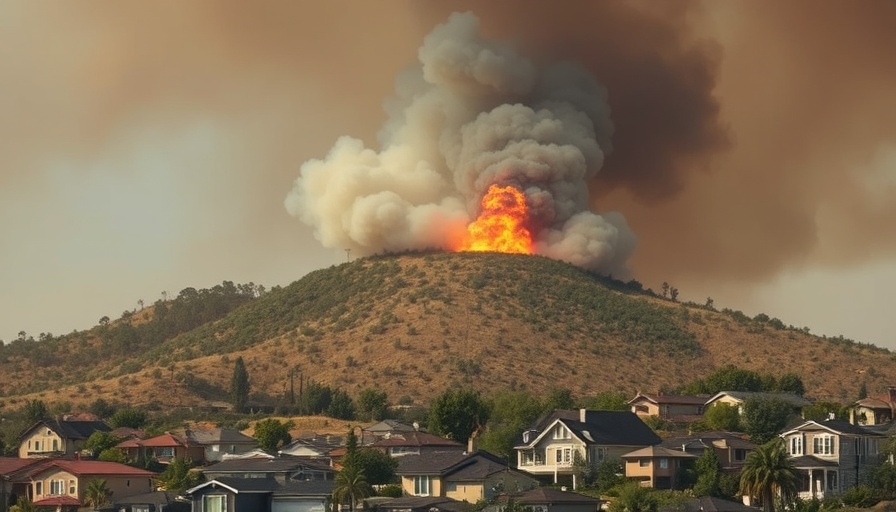
Understanding Fire Weather: An Essential Guide for Boutique Hospitality
As climate change accelerates, the concept of fire weather becomes increasingly critical, especially for those in the hospitality industry. Fire weather refers to specific conditions that can lead to wildfires, including temperature, humidity, precipitation levels, and wind speed. With more frequent extreme weather events due to climate change, it’s vital for small-scale hotel owners, Airbnb hosts, and eco-lodge managers to grasp the implications of fire weather on their properties.
Why Fire Weather Matters to Boutique Hospitality
For boutique hospitality professionals, understanding fire weather is essential for ensuring guest safety and property protection. Regions experiencing prolonged dry spells, high temperatures, and strong winds are more susceptible to wildfires. If your eco-friendly lodging is located in such areas, implementing fire preparedness measures can be life-saving. Awareness of fire weather patterns can guide your practices in resource management, protecting both your guests and the environment.
How to Monitor and Prepare for Fire Weather
Monitoring fire weather effectively can be life-saving. This involves keeping an eye on local weather forecasts and utilizing tools such as the National Fire Weather Outlooks provided by organizations like the National Oceanic and Atmospheric Administration (NOAA). These resources offer not only immediate fire weather conditions but also long-term predictions based on climate data. Here are some practical steps to prepare:
Create defensible space: Maintain clear areas around your property by regularly removing flammable debris, especially in high-risk seasons.
Implement fire-resistant landscaping: Use fire-resistant plants and materials to minimize the risk in your gardens.
Have an emergency plan: Develop and communicate an emergency evacuation plan for guests, ensuring everyone knows the exits and safety routes.
Integrating Sustainability with Fire Safety
Sustainable practices can go hand-in-hand with fire safety. Consider utilizing building materials that are both eco-friendly and fire-resistant. Furthermore, employing renewable energy sources can reduce reliance on outdoor utilities, minimizing potential ignition sources in case of a wildfire. Your choice of landscaping can also play a vital role; opting for native plants not only conserves water but can also be strategically selected to create buffer zones against fires.
Emphasizing the Importance of Community Awareness
Engaging with your local community regarding fire safety is equally important. Collaboration with local fire departments and participating in community fire safety programs can provide resources and support for your eco-lodging business. Additionally, fostering relationships with other local businesses in your network can lead to shared resources, making fire safety a communal effort.
In Conclusion: Take Action for a Safer Future
Understanding fire weather is not just about protecting property; it’s about ensuring the safety and experience of your guests. Equip your boutique hospitality venture with the knowledge and resources to mitigate risks associated with fire weather. Not only does this foster a safe environment, but it also emphasizes your commitment to sustainability in the face of climate change.
As climate conditions continue to evolve, the call for proactive fire safety measures become paramount, making it essential for all boutique hospitality professionals to educate themselves and adapt to these challenges. Explore fire weather monitoring tools and resources so you can enhance your eco-friendly practices and keep your community safe.
 Add Row
Add Row  Add
Add 




Write A Comment